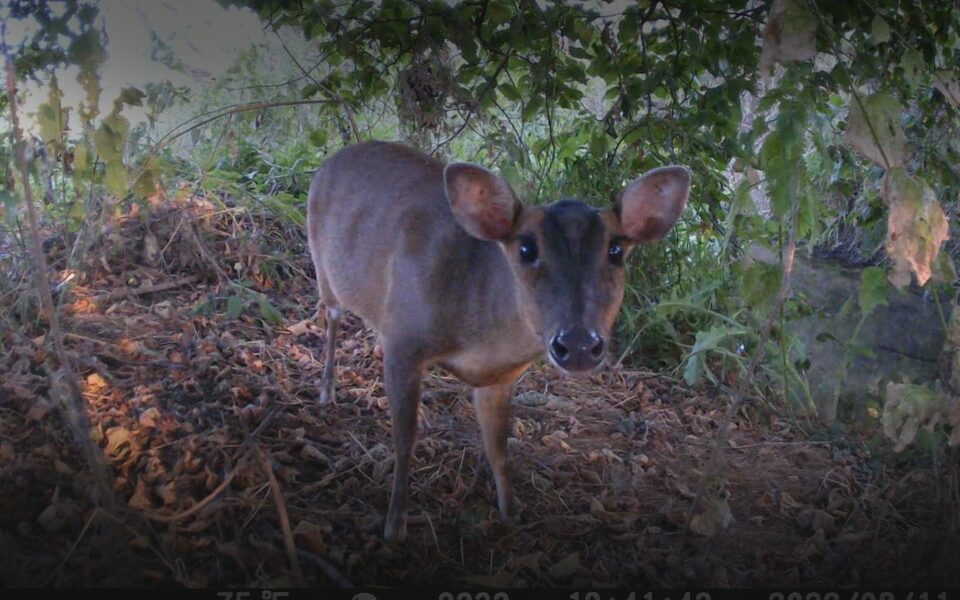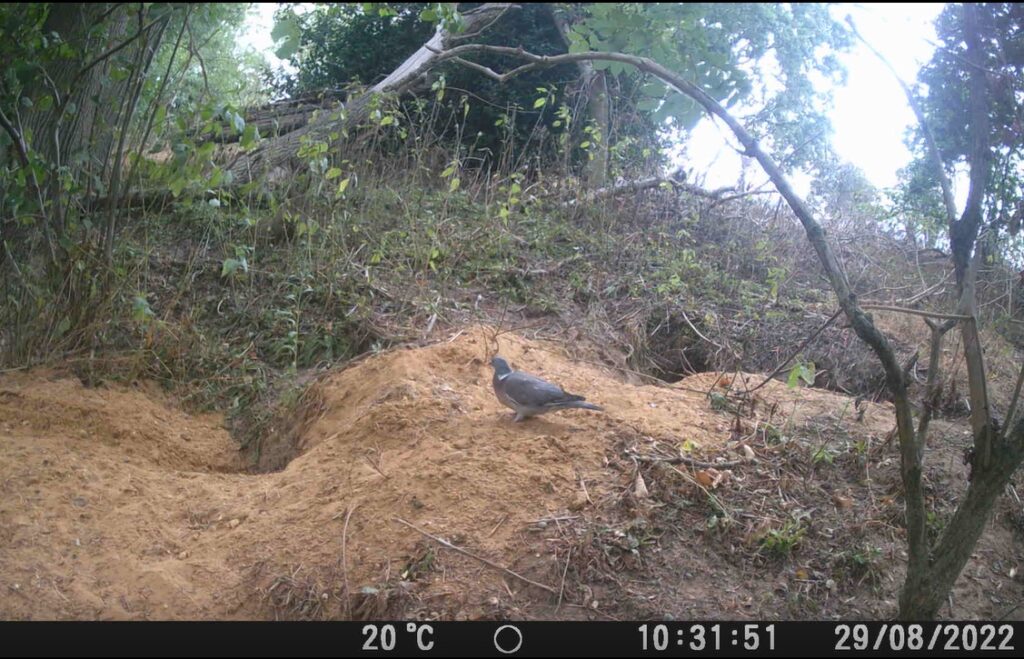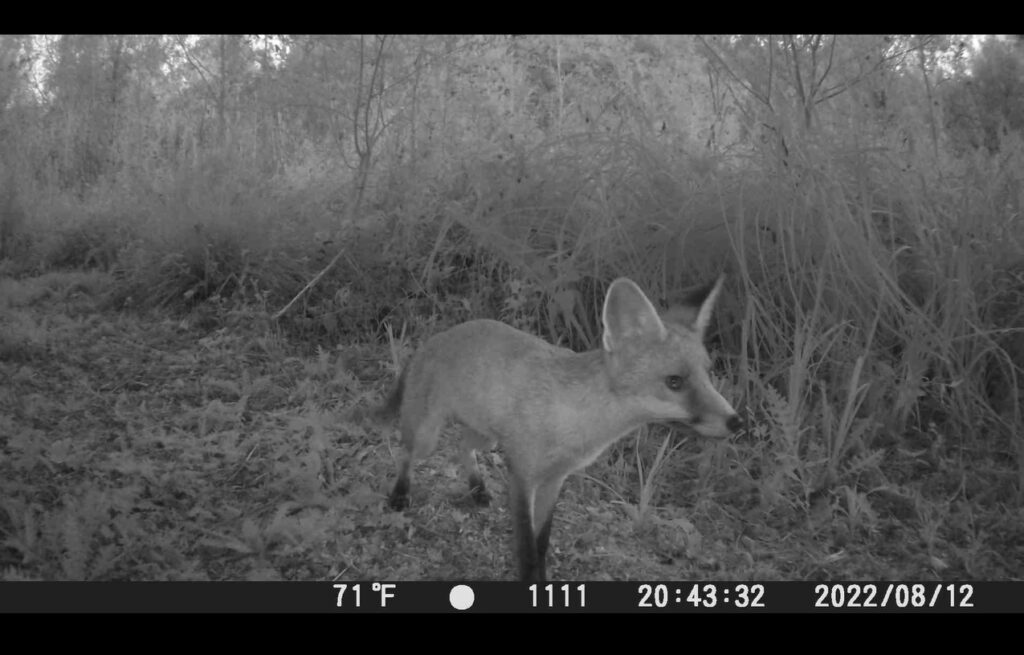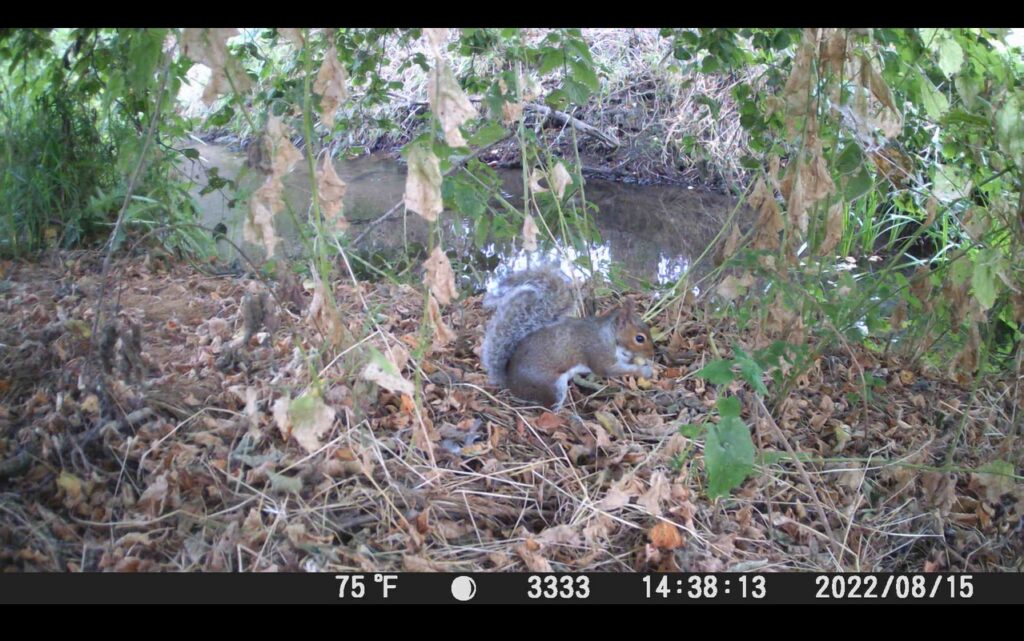
Camera traps are brilliant tools for monitoring wildlife.
Discover wildlife on school grounds using our award-winning Camera Trap Loan Scheme.
Schools get:
- One full-term long loan of a camera trap to capture footage of local wildlife
- Full instructions for the operation of the camera trap
- Check-in email and support throughout the loan
- Teacher pack of cross-curricular activities to investigate the wildlife you spot
- Certificate of Participation
- Participation stickers for your class (max 30 stickers)
At the end of the loan period, your pupils will have followed the wildlife monitoring process from start to finish and learned valuable skills that real conservationists use to monitor and protect wildlife.
If you have a school group who would like to get involved, please contact education@colchesterzoo.org for more information.
Prices
A camera trap loan will cost £40 for the period of one full-term. A second camera trap can be borrowed at the additional cost of £25. Two different camera traps can provide students the opportunity to run experiements or compare set-up and locations between the two traps. Please email us (education@colchesterzoo.org) for more information about this opportunity and to check availability.
Delivery or Collection
Camera traps can be collected from Colchester Zoo at no additional cost.
Alternatively, camera traps can be posted to your school (Mainland UK Delivery, excluding Islands and Highlands). Due to the expensive of the equipment, this postage will be sent via Royal Mail secure signed delivery at a charge of £10 per camera trap for posting to your school. Schools will then be responsible for organising and paying for return postage themselves (using the provided box and packaging).
Payment Methods
Payment is made by invoice which will be sent to you via email after you have booked a loan. Please note, this must be paid before collection or postage from the zoo.
Curriculumn Links
Camera traps, and the provided cross-curricular activities, can provide a valuable tool to enhance your students’ learning and meet curriculumn links.
Click for Primary Science National Curriculum links-
Year 1
Science – Plants: identify and name a variety of common wild and garden plants, including deciduous and evergreen trees; identify and describe the basic structure of a variety of common flowering plants, including trees.
Science – Animals, including humans: identify and name a variety of common animals; describe and compare the structure of a variety of common animals; identify and name a variety of common animals that are carnivores, herbivores and omnivores; describe and compare the structure of a variety of common animals; identify, name, draw and label the basic parts of the human body and say which part of the body is associated with each sense.
Science – Seasonal Changes: observe changes across the four seasons; observe and describe weather associated with the seasons and how day length varies.
Year 2
Science – Living things and their habitats: explore and compare the differences between things that are living, dead, and things that have never been alive; identify that most living things live in habitats to which they are suited and describe how different habitats provide for the basic needs of different kinds of animals and plants, and how they depend on each other; identify and name a variety of plants and animals in their habitats, including microhabitats;describe how animals obtain their food from plants and other animals, using the idea of a simple food chain, and identify and name different sources of food.
Science – Plants: observe and describe how seeds and bulbs grow into mature plants; find out and describe how plants need water, light and a suitable temperature to grow and stay healthy
Science – Animals, including humans: notice that animals, including humans, have offspring which grow into adults; find out about and describe the basic needs of animals, including humans, for survival (water, food and air).
Year 3
Science – Plants: identify and describe the functions of different parts of flowering plants: roots, stem/trunk, leaves and flowers; explore the requirements of plants for life and growth (air, light, water, nutrients from soil, and room to grow) and how they vary from plant to plant; investigate the way in which water is transported within plants; explore the part that flowers play in the life cycle of flowering plants, including pollination, seed formation and seed dispersal.
Science – Animals, including humans: notice that animals, including humans, have offspring which grow into adults; find out about and describe the basic needs of animals, including humans, for survival (water, food and air).
Year 4
Science – Living things, including humans: recognise that living things can be grouped in a variety of ways; explore and use classification keys to help group, identify and name a variety of living things in their local and wider environment; recognise that environments can change and that this can sometimes pose dangers to living things.
Science – Animals, including humans: construct and interpret a variety of food chains, identifying producers, predators and prey.
Year 5
Science – Living things, including humans: Describe the differences in the life cycles of a mammal, an amphibian, an insect and a bird; describe the life process of reproduction in some plants and animals.
Year 6
Science – Living things, including humans: describe how living things are classified into broad groups according to common observable characteristics and based on similarities and differences, including microorganisms, plants and animals; give reasons for classifying plants and animals based on specific characteristics.
Science – Animals, including humans: describe the ways in which nutrients and water are transported within animals, including humans.
Science – Evolution and inheritance: recognise that living things have changed over time and that fossils provide information about living things that inhabited the Earth millions of years ago; recognise that living things produce offspring of the same kind, but normally offspring vary and are not identical to their parents; identify how animals and plants are adapted to suit their environment in different ways and that adaptation may lead to evolution
Risk Assessments
Colchester Zoo provides a risk assessment guidance sheet with general outlines of potential risks and controls identified (click here for our camera trapping risk assessment).
-
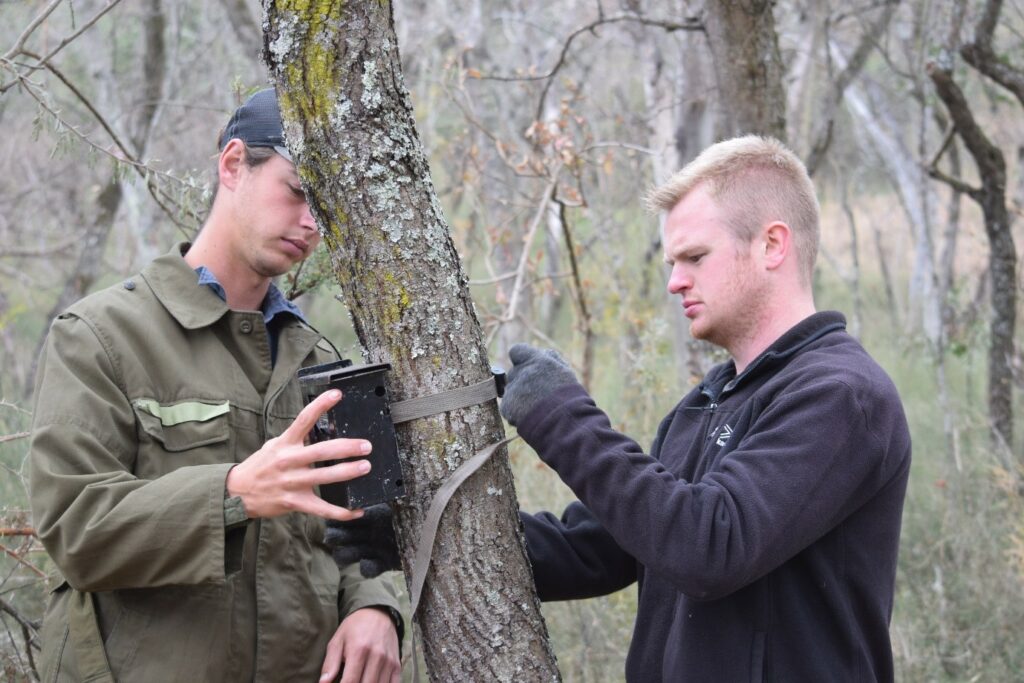
Setting up Camera Traps at UmPhafa -
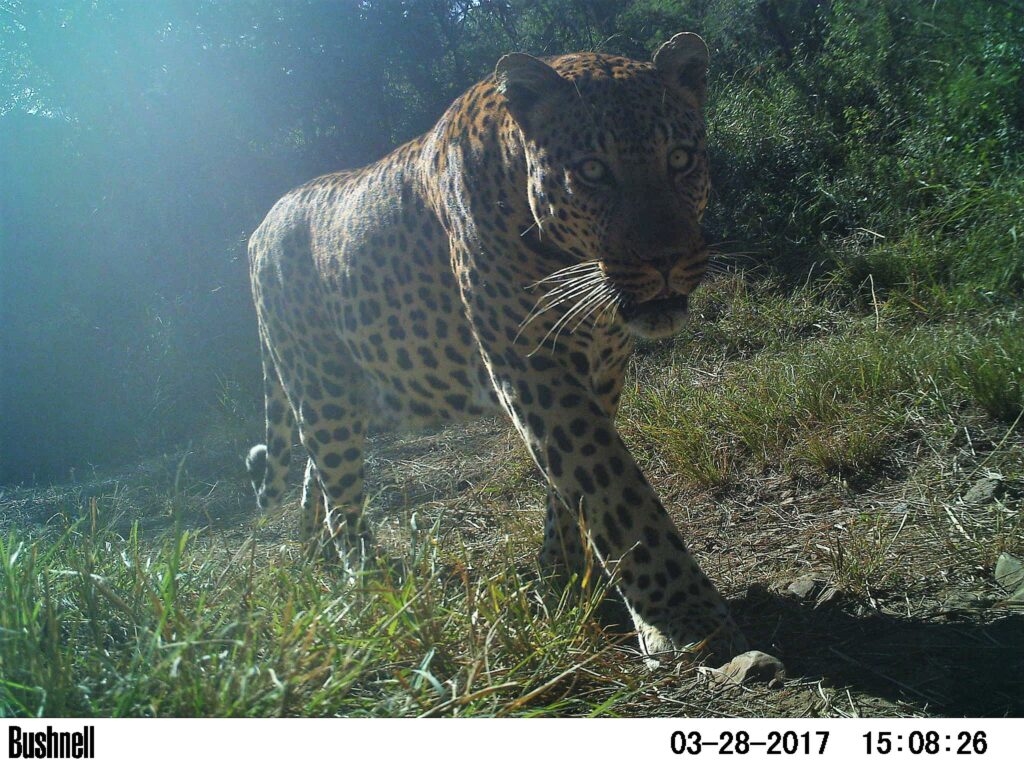
Leopard at UmPhafa
Camera Traps at Colchester Zoo
UmPhafa Private Nature Reserve rangers use camera traps to observe wildlife living on the reserve. Using camera traps, the UmPhafa team discovered leopards living on the reserve – a fantastic find! Once we know what wildlife is living in these areas, we can ensure that we protect and conserve them.
In Colchester Zoo’s Nature Area, there have been sightings of foxes, deer, badgers and small rodents, but camera traps also captured footage of an otter near the stream! Otters were previously classified as rare in England, so knowing that they are active on zoo grounds means we are home to a very special animal.


